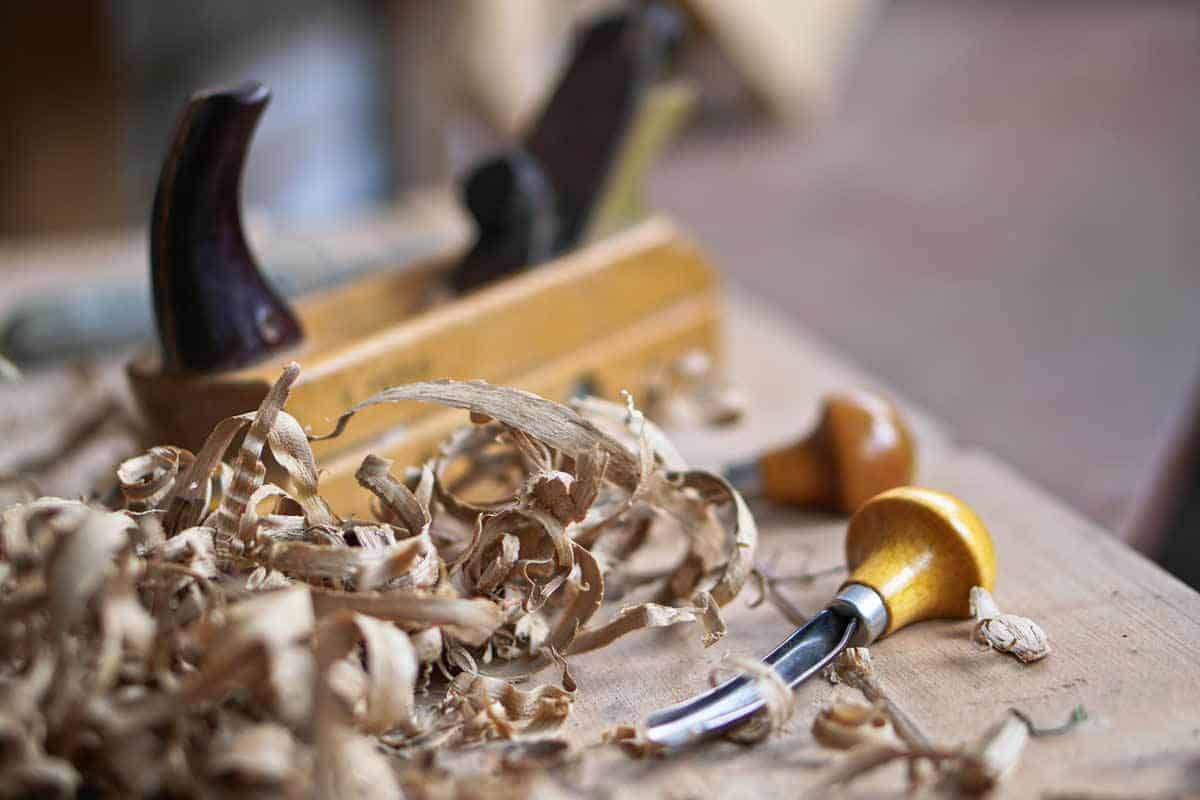4 Essential Hand Wood Planers

Hand planes (also known as hand wood planers) are awesome tools you should have in your woodworking workshop for precision work. They’re a must-have planing tool for every woodworker to ensure a smooth, flat surface, whether you’re a professional with a business or a hobbyist. There are many different types such as surface planers, the bullnose plane, the scraper plane, the angle plane, and, of course wooden planes.
Wood hand planers have been around for ages and we’re not exaggerating. Hand planes for shaping wood aren’t a new idea or concept. Archaeologists have been digging up ancient hand planes for decades and have even found drawings of them in both Asia and Europe. Today, of course our hand planes are a bit more advanced.
We’ve created this article with the hopes that it’ll help you grow your tool collection by including these four essential hand planes. We’ll also learn all about how these nifty creations work and how they’ll benefit you.
What Do Hand Planes Do and How Do They Work?
Planes, in general, are used in woodworking to manipulate the shape of the wood. Planes can smooth wood and thin the wood down to an appropriate size. They also help you create inclines for your project or make your piece of lumber perfectly level.
For larger projects and large pieces of lumber, woodworkers should be using power planers that run on a motor. These beasts are helpful but they can’t always do the job. This is where hand planers step in.
If you’re using smaller pieces of lumber, you’re going to want hand planes to do the flattening and smoothing. They’re smaller and easy to use without the hassle of setting them up.
Hand planes use the force of your muscles (instead of a motor) to do the work. You have to push the hand plane away from your body and you want to go with the grain of your wood for the best outcome. Going against the grain can cause splinting and give you a terrible finish.
The force of you pushing the plane with the grain pushes the blade into the piece of wood, scraping off a thin layer of your lumber. It leaves shavings that escape out of the mouth of the plane and leaves the surface of the wood smoother and thinner.
Basic hand planes have a wooden frame (or iron frame). Attached to the frame of the plane is a blade set at a specific angle for cutting. The bottom of the plane’s frame is completely flat. This helps the plane glide over the highest points of the wood, creating a smooth and level surface.
The majority of hand planes include a handle (sometimes a knob) for you to grasp and hold onto while using it. Holding onto the handle of your plane keeps your hand and the plane steady. This ensures that you’ll have fewer mistakes while shaving lumber.
Most hand planes are also adjustable so you can adjust the blade at the angle that suits how thick you want to shave your piece of wood.
4 Essential Hand Planers You Need for Woodworking Projects
#1 Block Bench Planes
A block plane is the very first plane you should be shopping for. You’ll never guess when one of these planes will come in handy while woodworking. These planes are great for:
- Fixing Marks: Block bench planes can erase marks left by other woodworking machines. It’s common for machines to leave milling (a wavy shaped mark) marks on your lumber. These planes can smooth and erase these marks quickly. Just as fast, block bench planes can fix any end grain cuts you’re dealing with.
- Bevel or Chamfer Edges: These plans work for either beveling or chamfering the edges of lumber as is needed for your specific needs. They make great angles.
- Easing Edges: Are your edges too sharp and pointy? Are they splintering? The block plane can ease and smooth the small edges of your piece of wood quickly.
Try this:
Stanley 12-920 6-1/2 Inch Contractor Grade Block Plane
#2 Smoothing Bench Planes
\A smoothing bench plane (sometimes just referred to as a smoothing bench) is usually going to be the very last plane your lumber or project sees. This is because it finishes up the job nicely and leaves the smoothest surface over any of the other hand planes. You won’t even need sandpaper if you decide to use a smoothing bench plane.
Try this:
Grizzly Industrial H7566-14" Smoothing Plane
#3 Jointer Bench Planes
A jointer plane (also known as a try plane or trying plane) can benefit you in several ways including:
- Flattening of Face: A jointer bench plane will flatten the face of your lumber perfectly. You can do this with one face but, unfortunately, you won’t be able to make parallel faces with this particular hand plane.
- Squaring Edge: If you use a jointer plane to flatten a face you can turn around and square that edge to match it. It will square that edge right out.
Try this:
Taytools Jointer Bench Plane 22 Inch #7
#4 Jack Bench Planes
A jack bench plane (also referred to as a fore plane) is usually the very first plane you should be using on your lumber or project. Well, you can use it after a scrub plane’s been used, if you choose to use one. The other hand planes should be used after you use the jack bench plane.
On these particular planes, the cut is deeper than the other planes you’ll use. This makes a jack bench plane perfect for stock cutting instead, so you can produce the right thickness of your lumber.
Try this:
Stanley 12-137 No. 62 Low Angle Jack Plane
Conclusion
Hand wood planers are basic tools that are needed by every woodworker. Nobody should be in the dark on hand planes. Now there is no excuse to not own the best hand planes for your wood projects.




